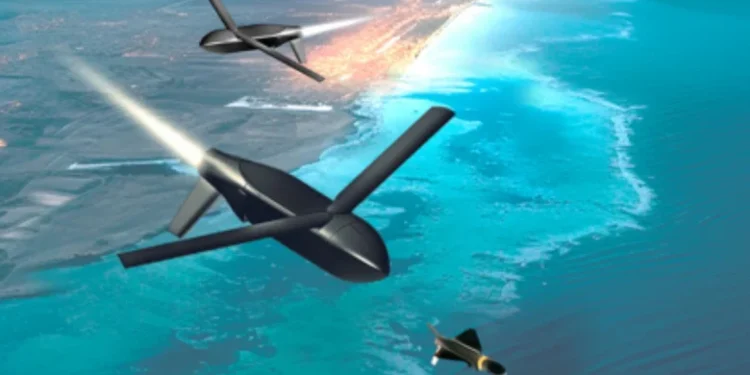For decades, The U.S. military has led the way in battlefield drone technology. Today’s armed forces operate a wide range of drones equipped to launch various types of munitions. Now, Northrop Grumman is developing a new type of drone that could revolutionize the field. The Lumberjack is a single-use attack drone designed to carry and release precision bomblets before diving headfirst into its target for a final impact.
What sets the Lumberjack apart is its full autonomy, putting it ahead of most current combat drones. It’s expected to deploy the Hatchet Miniature Precision Strike Munition—a lightweight, six-pound glide bomb with a compact design. Introduced in May 2025, the Lumberjack can handle electronic warfare, recon missions, and kinetic strikes, while loitering in the air for hours before engaging.
If mass-produced, this drone could prove useful across various conflict zones. By hitting multiple targets with several bomblets, the Lumberjack offers a cost-effective alternative to older models like the MQ-1 Predator or the larger MQ-9 Reaper. Its fire-and-forget functionality could redefine drone warfare tactics going forward.
Northrop Grumman’s Lumberjack
Northrop Grumman calls the Lumberjack “a modular, logistically flexible attritable Group 3 UAS delivering organic loitering, beyond line-of-sight, precision strike and electronic warfare capabilities with reduced cost per effect.” This cost per effect ranges from $75,000 to $100,000, though it’s unclear whether that includes just the drone, the payload, or both.
Even at $100,000, the Lumberjack still costs significantly less than many other military drones. However, it’s a one-way mission—once deployed, it’s not coming back. That’s a key reason its cost could spike, depending on how and where it’s used. Despite its compact size, the drone packs a serious punch. Fully fueled and loaded, it weighs in at 290 pounds.
Its payload options include kinetic and non-kinetic munitions such as the Hatchet, along with ISR (intelligence, surveillance, reconnaissance) sensors. Powered by a jet engine, it can hit speeds up to Mach 0.3 (230 mph) and reach altitudes of 18,000 feet. It can cover hundreds of miles, and when launched from an aircraft, its range extends further. Once airborne, it can trade distance for loitering time, keeping a close eye on targets until it’s time to strike.
Northrop Grumman’s Hatchet
The Hatchet is a potent bomblet used beyond just the Lumberjack. Group 3 drones—those weighing between 56 and 1,320 pounds—can carry it, as long as they fly under 287 mph and below 18,000 feet. The Hatchet is a miniature glide weapon with remarkable accuracy, guided by a semi-active laser/GPS/INS system that can hit targets within 2 meters (6.5 feet).
Its scalable Lethality Enhanced Ordnance (LEO) warhead delivers between 45% and 80% of the destructive force of a 500-pound bomb—despite weighing only 3.12 pounds. Though compact, it can still take out small structures or unarmored vehicles. Northrop Grumman hasn’t disclosed the cost per unit or how many bomblets a single Lumberjack can carry. If the “cost per effect” includes each Hatchet, missions could become quite expensive.
Even so, when compared to other uncrewed aerial systems, the overall cost of the Lumberjack still represents progress. For context, a set of four MQ-1 Predators, complete with a ground control station and communication suite, costs around $20 million. While the Predator and the Lumberjack serve different roles, the price contrast is hard to ignore.









